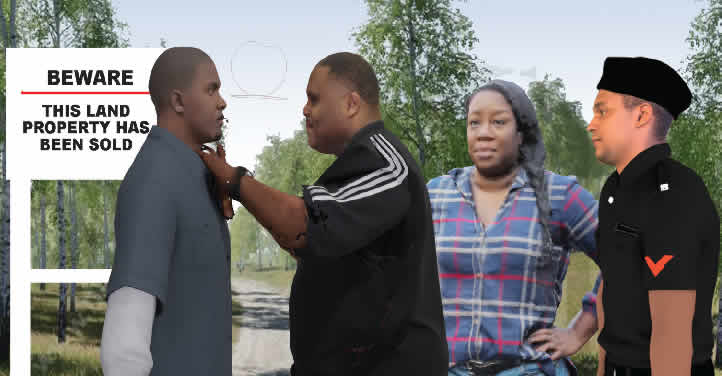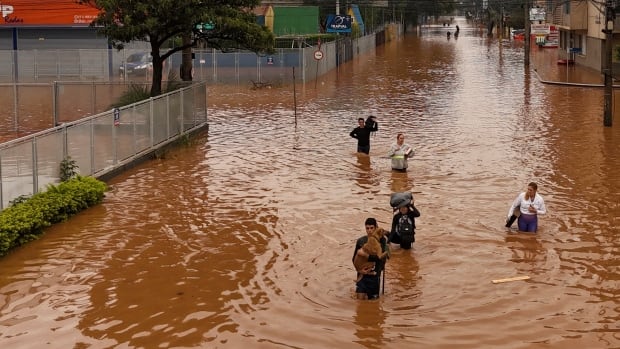As Ukraine’s military chief issued a fresh warning on Thursday that Russia is massing more troops along the border with the Kharkiv region — which has come under deadly attack in recent weeks — there are growing calls from NATO members to allow Kyiv to use Western-supplied weapons to strike military targets inside Russia.
“The time has come to consider some of these restrictions to enable the Ukrainians to really defend themselves,” said Jens Stoltenberg, the secretary general of NATO, ahead of a meeting of NATO foreign ministers in Prague, Czech Republic.
In the past few weeks, several NATO members, including the U.K., France, Denmark and Canada, have said Ukraine should be allowed to hit targets in Russia using Western-supplied weapons. This would include the build-up of Russian troops and equipment along Russia’s border near Kharkiv, which is where Ukraine’s Col. Gen. Oleksandr Syrskyi warned Moscow is now sending additional regiments and brigades.
The United States has not changed its official position, which prohibits U.S.-supplied equipment from attacking Russian sites, but U.S. Secretary of State Antony Blinken said on Wednesday that its policy will continue to be “adapted and adjusted” based on battlefield conditions.
On Thursday, Politico reported based on three sources that the Biden administration had quietly given Ukraine permission to use U.S.-supplied weapons to strike inside Russia, but only near Kharkiv. A U.S. official told Politico that the longstanding policy on long-range strikes inside Russia hadn’t changed.
In recent months, Ukraine has stepped up attacks inside Russia, hitting military sites and energy infrastructure with drones. But there are growing calls from Ukrainian officials to be able use Western-supplied weapons, particularly after Russian troops were able to easily break through Ukraine’s defences on May 10, and seized around a dozen small Ukrainian settlements in the Kharkiv region.
WATCH | Allies say Ukraine should be able to use Western weapons to strike inside Russia:
France and Germany both announced this week that Ukraine is allowed to use the weapons they supplied to strike military targets inside Russia. Canada appears to be siding with its European allies. Power & Politics discusses this shift in position from some NATO countries with retired general and former chief of the defence staff Tom Lawson.
Fears of escalation
Even before Russia launched its invasion of Ukraine on Feb. 24, 2002, NATO members had been debating about how to give Kyiv the military help it needs without further inflaming tensions with Russia and kicking off a wider global conflict, potentially even a nuclear one.
In recent days, Russian President Vladimir Putin, along with Kremlin spokesperson Dmitry Peskov, warned there would be repercussions if the West “embarked on a new round of escalation.”
On Tuesday, Putin said that Europe, especially “its small countries,” should be “aware of what they are playing with.”
Fears of escalating and expanding the conflict are why some NATO countries have been cautious about which weapons systems to supply to Ukraine.
Washington’s position has evolved throughout the war. Weapons that officials were initially reluctant to send — like the MGM-140 Army Tactical Missile System (ATACMS), which has a range of 300 kilometres — are now in Ukraine.
“We have to get over this. We have to say no systems are off-limits, no use of weapons is off-limits, as long as it conforms to international law,” said Kurt Volker, a former U.S. ambassador to NATO and currently a distinguished fellow with the Washington, D.C.-based Centre for European Policy Analysis.
Volker, who spoke with CBC News earlier this month during a security conference in Tallinn, Estonia, said many people weigh the risks of escalation, but there are fewer discussions about the risks of not being bold enough.
“The cost of that is a long war… emboldening Putin by making it clear we don’t have the resolve to actually help Ukraine win.”
In an interview with the Ukrainian outlet European Pravda published four weeks ago, Latvia’s Foreign Minister Baiba Braze said some countries had already provided weapons to Kyiv without any conditions, but that those agreements were not made “aloud.”
Kharkiv offensive
Before Russia’s incursion on May 10, Ukraine said it had been aware of a buildup of thousands of troops along the border with the Kharkiv region and the neighbouring region of Sumy.
In the days that followed, more than 9,000 people were evacuated from the area, most of whom were living in the village of Vovchansk, which lies 45 km from the city of Kharkiv, and is now nearly destroyed, according to the head of the local military administration.
In an opinion piece published in the Washington Post on Thursday, a commander of a Ukrainian drone unit said they were being forced to defend Ukraine with “one hand tied behind” their backs, because they are unable to use Western munitions to strike Russian troops and equipment positioned 30 to 40 kilometres behind the Russian border.
An assessment published on May 13 by the Institute for the Study of War argued the U.S.prohibition on the use of its weapons beyond Ukraine’s border had created a “vast sanctuary” for Russia.
It routinely strikes the Kharkiv region, including the city of Kharkiv, with glide bombs that experts say are difficult to defend against, as under current U.S. rules, Ukraine can’t intercept Russian planes in Russian airspace with U.S.-provided air defence systems.
The ISW argues the U.S. doesn’t need to lift all of its restrictions on the use of its weapons inside Russia, but should allow Ukrainian forces to at least “defend themselves against immediate operational assaults.”
Volker said the guiding principle should be international law.
“It requires that you have proportionality and that you fire against military targets, not against civilian ones,” he said. “That should be the standard to which Ukraine is held.”
Upcoming summit
While several NATO members have spoken publicly about allowing Ukraine to launch Western-supplied weapons into Russia, Italy’s foreign minister told an Italian news outlet on Thursday that weapons given by Italy should only be used in Ukraine.
As pressure from its European allies mounts, the U.S. is getting ready to host the next NATO summit in July.
In an interview with CBC’s Power and Politics earlier this week, retired Canadian general and former chief of the defence staff Tom Lawson said he believes all of the recent statements from Western officials may be a part of a U.S. attempt to gauge Russia’s reaction. “I actually think that they are asking nations like Canada to throw out these trial balloons to see what kind of response comes back from Russia,” Lawson said.
“I think this is in anticipation of what will take place in July at the summit.”






